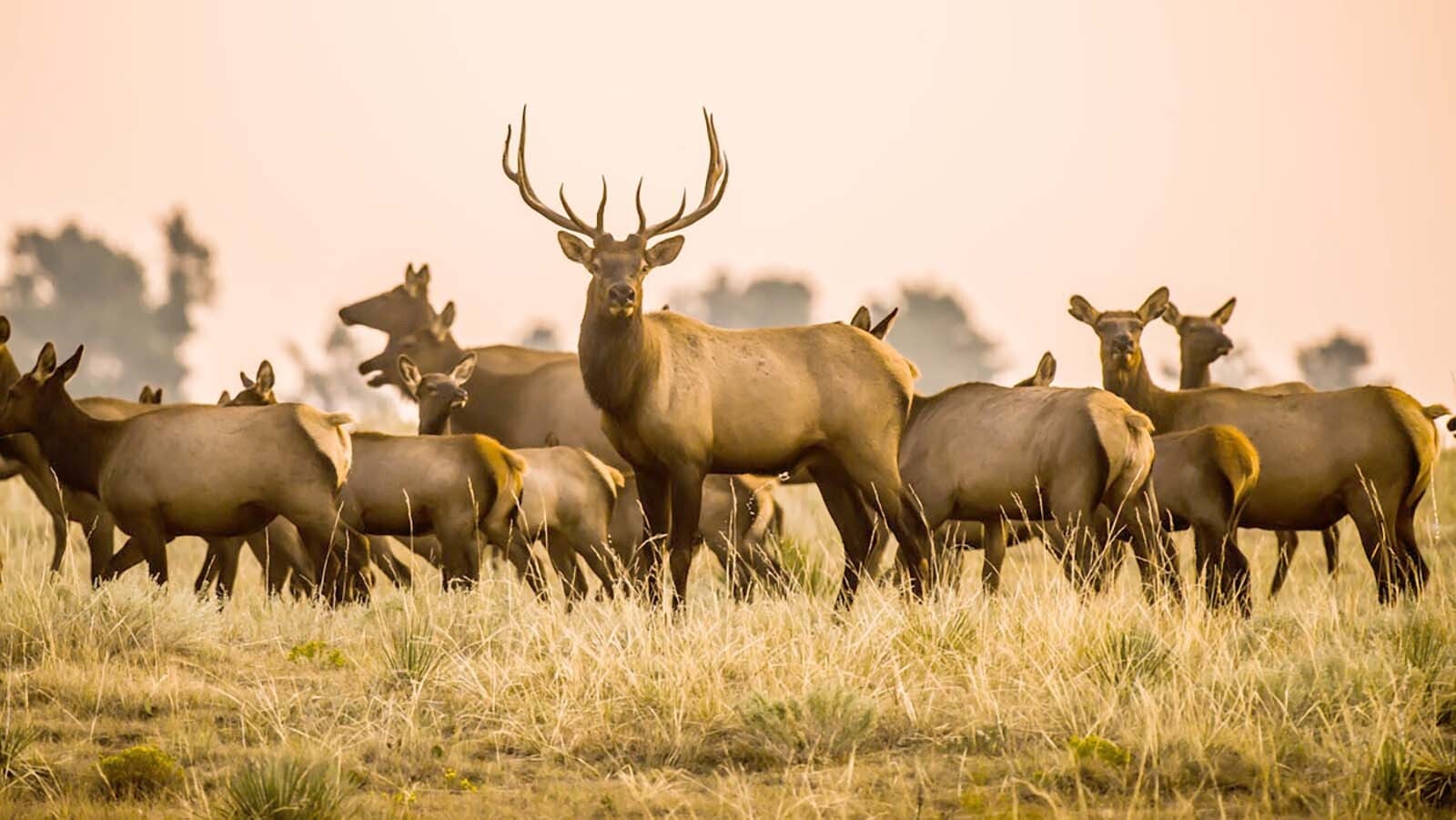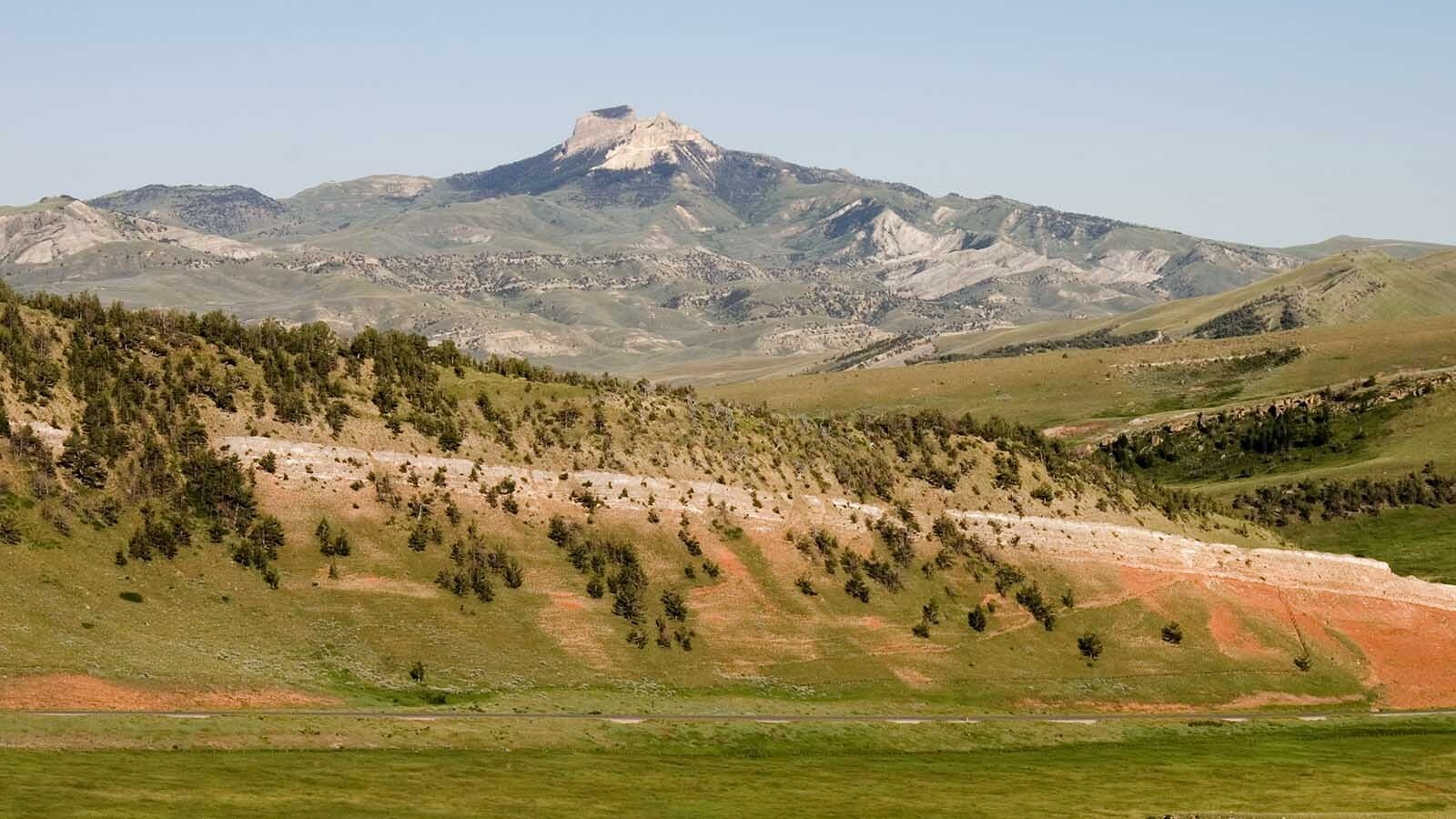Elk, like grizzly bears, aren’t commonly thought of as Great Plains animals.
Yet both species have roots in the vast prairies. And as grizzlies have been reclaiming some of their flatland habitat in Montana – elk herds have been growing in Nebraska.
And some of the problems and controversies swirling around elk in Nebraska mirror those in Wyoming. Some of those include farmers irritated about the critters raiding their crops, and hunters trying to get access to private land and thin them out, a Nebraska wildlife officer told Cowboy State Daily.
“Our big issue is the overlap with corn, the damage they (elk) cause there drives tolerance way down and amplifies those ‘fence line diplomacy’ issues,” said Luke Meduna, the Big Game Program Manager for the Nebraska Game and Parks Commission Wildlife Division.
“They’re right at home on the prairie, that’s for sure,” he added.
Wyoming DNA
Vast herds of elk once occupied the Great Plains, and they were also at home in parts of the Midwest and Eastern U.S. However, with the westward push of American settlement, elk, grizzlies and other plains critters were driven back up into the high country of the Rockies.
There have been successful elk reintroduction programs in states such as Kentucky, where a lucky few hunters can draw elk tags.
Nebraska’s elk, which are now estimated to number around 2,500, probably came back into the Cornhusker state on their own, Meduna said.
“We had elk starting to trickle in in the 1970s, in northwest Nebraska” likely from Wyoming, he said.
Later, elk started crossing the Nebraska state line from eastern Colorado, he added.
‘We’ve Hit A Threshold’
Nebraska started offering extremely limited elk hunting in the 1980s, Meduna said. By 1995, yearly elk seasons were fixed, and the number of tags was steady.
“For quite a while, we typically issued 100 bull elk permits and up to 260 cow elk permits,” he said.
But more recently, elk numbers started to balloon. And Nebraska farmers, who had mostly been quiet about the wandering wapiti, started to get vocal, he said.
“They’re happy to see eight or 10 elk come up over the hill. It’s when there gets to be 25, or 40 or 50 coming over the hill, they’re like, ‘Wait a minute, what’s going on here?’” he said.
“We’ve kind of hit a threshold where our landowners just don’t want any more elk, and this year we’ve issued 267 bull tags and 959 antlerless elk tags,” Meduna said.
Ideally, Nebraska would like to cap its elk population around 2,000, he added, which game managers think is doable by boosting the number of hunting tags.
Getting precise counts of elk in Nebraska can be difficult, he added. They are more spread out across Nebraska than they might be in Wyoming, and often take shelter in wooded areas, making them difficult to spot from the air.
Good Food Makes Herds Grow
Dusty Shifflett grew up in Tie Siding, Wyoming, but now lives near Alliance, Nebraska. He told Cowboy State Daily that in his estimation, the introduction of overhead pivot irrigation created much more opportunity for growing crops. And that, in turn has grown elk herds in places such as Nebraska.
“If you look at the amount of forage available to elk, it’s unbelievable out here. They’re putting alfalfa where there’s never been alfalfa and corn where there’s never been corn,” said Shifflett, who raises a few cattle on his 20-acre property.
He added that he has no doubt that the abundance of food has made the elk breed more prolifically.
“They’re not hiding, they’re reproducing,” he said. “It’s just like a cow, the better feed you put out for a cow, the better she’s going to breed back.”
Elk can be particularly hard on corn crops, Shifflett said.
“They’ve got all of the corn that they want. They go out into these corn fields and lay down, and they’re laying all the corn over.”
Management Challenges Mirror Wyoming’s
While Nebraska’s challenges with elk are on a much smaller scale than Wyoming’s, the situations in the two states mirror each other, Meduna said.
In addition to farmers getting irritated over their crops being raided, there are the quandaries caused when some landowners want more elk than their neighbors might be willing to tolerate, he said. And hunters getting access to private land can be problem too.
“Most of our elk that are harvested, probably close to 98 percent, are harvested on private land,” he said.
In addition to encouraging hunter access, Nebraska issues landowner permits for elk. Those allow farmers and their families to hunt elk on their own property, and have proven to be popular, Meduna said.
“We get some landowners that are managing for elk, and some landowners who want zero elk, so we get those issues across fences,” he added. “Especially in a primarily private land state, opinions over just how many elk there should be can vary by parcel.”
Since the Cornhusker State is dealing with things on a smaller scale, Meduna said it’s possible that Nebraska can find a balance regarding elk within a few years – even if Wyoming might have a long slog ahead.
“We’re starting to catch up, so I don’t expect that we’ll be hammering down and issuing quite so many permits for very many more seasons,” he said.
Mark Heinz can be reached at mark@cowboystatedaily.com.





